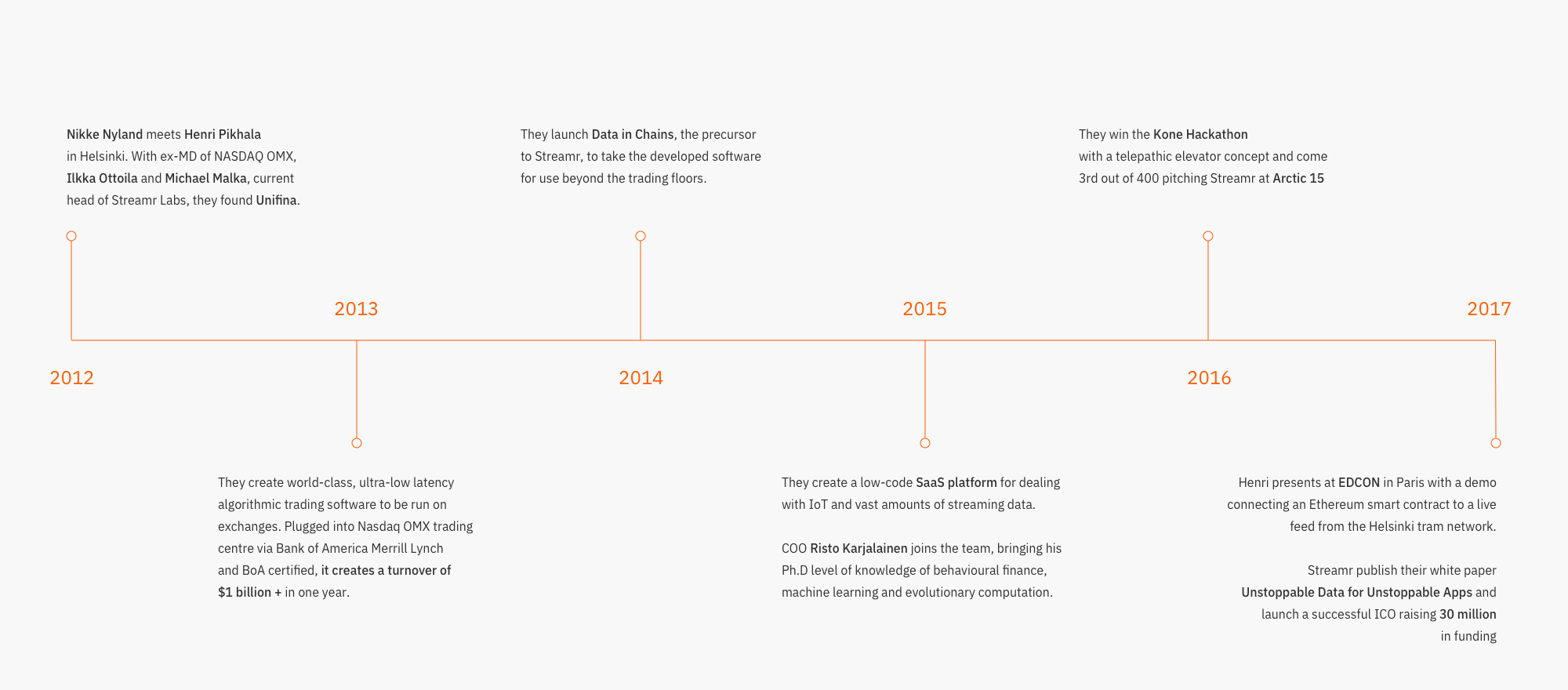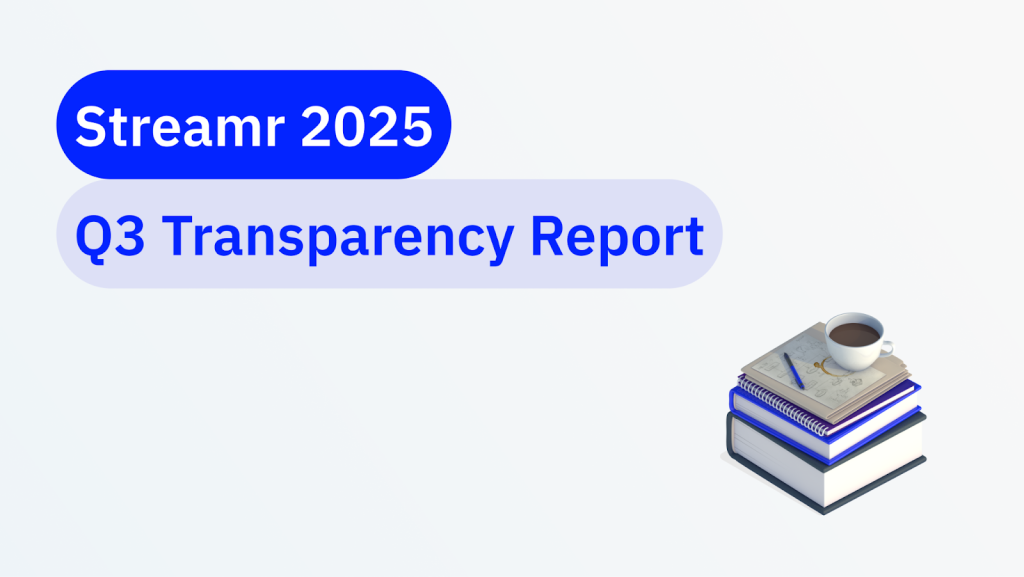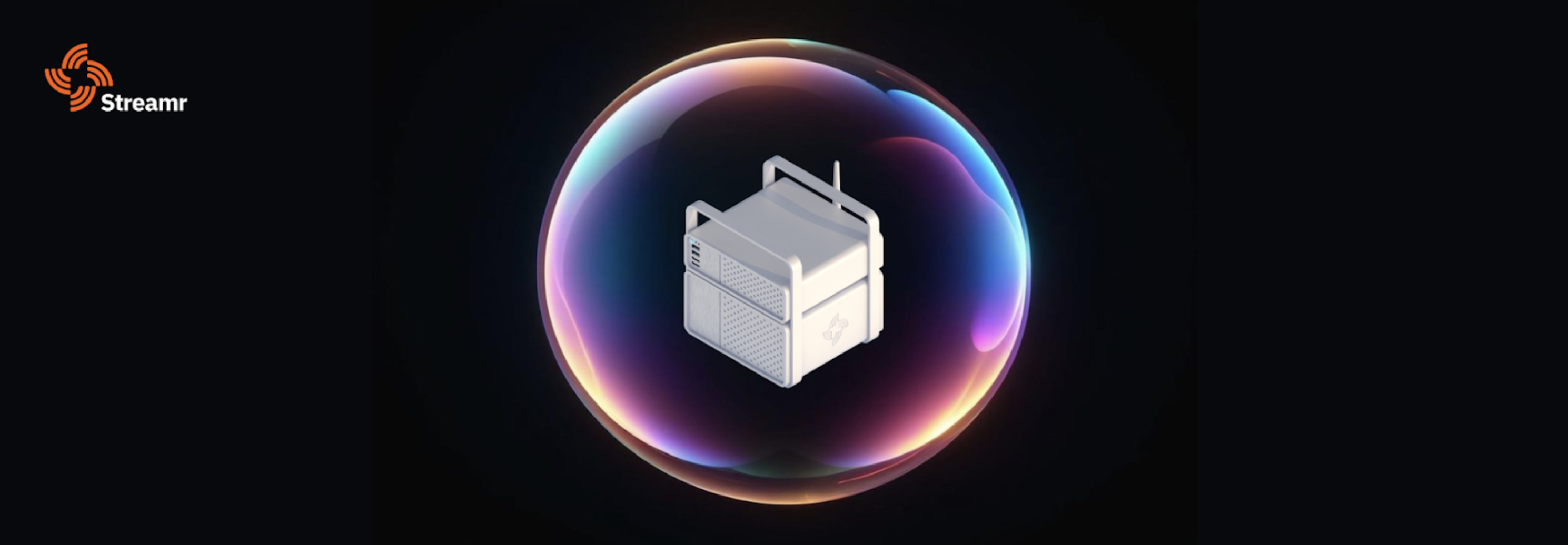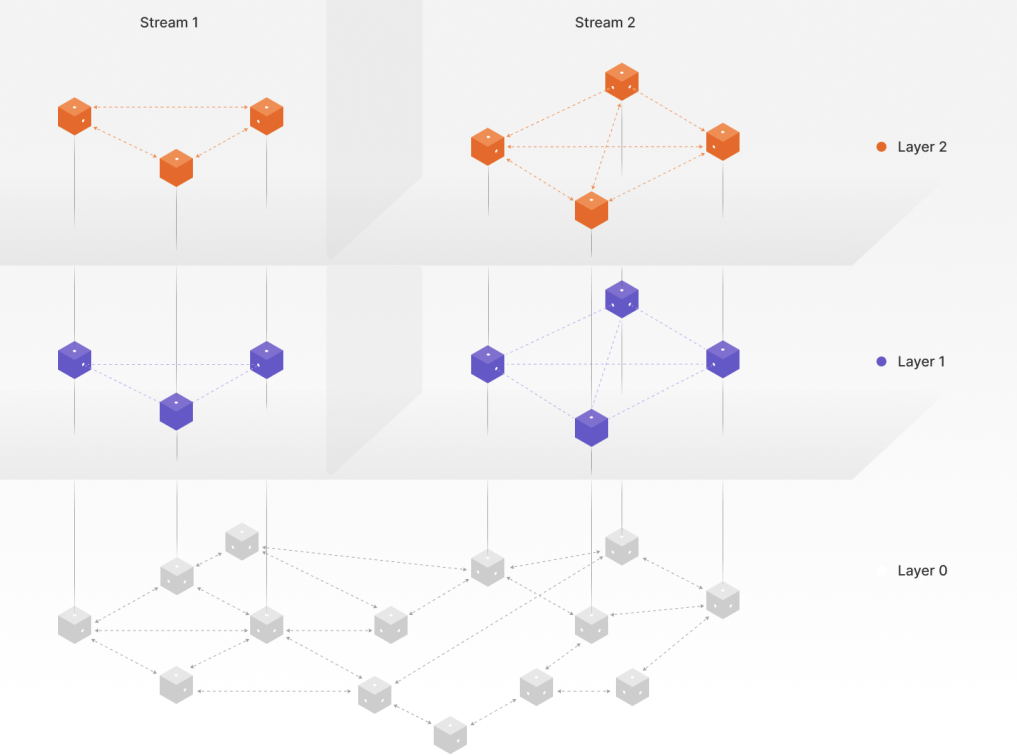Many people know that, unlike most companies within the crypto space, Streamr already has a working product. However, less well-known is that Streamr also has a proud heritage of creating cutting-edge innovations. In fact, in one form or the other, Streamr has been turning ingenious ideas into reality for nearly six years. So, let’s take a trip down memory lane to see how the Streamr we know and love today came into existence.
Table of Contents
Great minds think alike
Like all great company stories, Streamr’s began with a meeting of minds.
“I met Henri back in 2012 in Helsinki,” says co-founder Nikke Nylund. “We were both fascinated by the potential of real-time data. I’d sold my share of my third startup, Quartal, to Investis Ltd a couple of years before and had a ton of ideas about how real-time data could be used in the trading world. I was really keen to test these out.”
The pair established Unifina along with the ex-MD of NASDAQ OMX, Ilkka Ottoila, and Michael Malka, the current Head of Streamr Labs, to focus on algorithmic and low-latency trading platform development. It was especially geared towards a high-frequency strategy on Nordic markets. In short, the team wanted to create algorithms, which could act on large amounts of streaming data, from an exchange’s order books, without any delay.

State-of-the-art algorithmic software
“We originally planned to licence software, but we soon discovered it was very expensive, so Henri suggested we create our own,” says Nikke. “It took around a year, but eventually we developed totally unique, high-frequency, low-latency algorithmic software, which predicted market movements. It was state-of-the-art and worked better than any of our competitors. But to make it really profitable we needed to use it on bigger stock markets, like the US and those in Asia. Unfortunately, it would have taken at least a year and a half to get all the regulatory papers together and raise funds.”
Then in 2014 they had a brainwave. Their software was revolutionary, but competition in the financial sector was fierce and time of the essence. What if they could take the expertise they’d developed and apply it beyond the trading floors? In a world increasingly flooded with real-time data from IoT, where instantaneous reactions had more and more value, their software had huge potential.
“We realised there were ‘blue oceans’ of uncontested market space,” Nikke says. “And that’s where we wanted to be.”
Planning a real-time data revolution
And so in 2014, Data in Chains, the precursor to Streamr was born. IoT and real-time data were revolutionizing the world, and what was the point, they thought, of so many sensors, if not to provide real-time data and identify signals on the fly? They believed this would lead to algorithms taking automatic action to grab those fleeting-but-profitable opportunities. Ultimately, this would benefit individuals, business and society as a whole.
“Our aim was to create a SaaS platform that would allow anyone to use our software to handle vast amounts of streaming data and users,” says Nikke. “You simply needed to open an account and it would work with a wide range of real-world use cases.”
It was during this time that COO Risto Karjalainen joined the team. His Ph.D. in behavioural finance, machine learning and evolutionary computation from the Wharton School at U. Penn, combined with his experience as Quant and portfolio manager with JP Morgan & Merrill Lynch, meant he immediately saw the potential of the platform.
Winning over the world
By 2015, they’d created a working and scalable low-code SaaS platform which was easy to develop. The guys then got to work showcasing some of those real-world use cases like reducing food waste and creating “telepathic” elevators, which helped them work more efficiently.
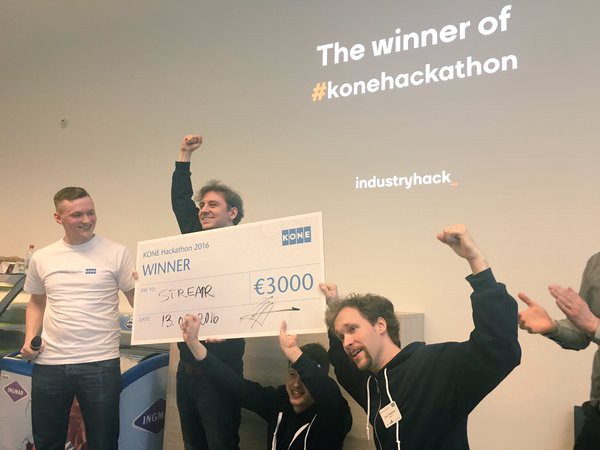
“Our ultimate vision was that everyone could use our platform and tools to connect real-time data sources,” says Henri Pihkala, Founder and CEO. But to really fulfil our potential, we realised another layer was needed, which provided both community and a mechanism for trust.”
How we fell in love with blockchain
Happily, in 2016, their hometown — the Finnish capital Helsinki — was, and still is, a hotbed of innovation. Through mutual friends, they were introduced to experts within the blockchain community, which got the guys thinking. Here was an incredible community of tech-savvy individuals who’d created a decentralised, trustless network where immutable facts were mined and set in stone. What’s more, there was a protocol where you can have computer code run in the same decentralised, trustless fashion, and all it takes is something called “gas”.
“Our minds were blown. It’s not that we hadn’t heard of Bitcoin, blockchain, Ethereum, and other related technologies before, but it took a bolt of lightning for the reality to fully click,” says Henri. “We already knew how to work with real-time data, and how to make life easy for those developing algorithms on top of streaming data. But what if we applied this to a decentralised computing machine? Could we ultimately offer the world a trust-free service with easy access to real-world data, and a killer usability layer?”
5 minutes of magic
The team got to work putting the pieces together. Then last year at EDCON in Paris, Henri took to the stage, connected a smart contract to a live feed from Helsinki City public transport, and deployed the contract. It took just 5 minutes. The team had proved that a simple pay-by-use demo, using the Ethereum platform, was already possible using existing Streamr tools. The presentation was so well received that it made their minds up to push forward. Less than a month later, they published their white paper Unstoppable Data for Unstoppable Apps, and so began their journey to ICO and the Streamr we now know and love.
That journey still has a long way to go, but as you can see, this vision has already been taken far and much of the technology already proven. We look forward to finding out what the next chapter holds and we hope you do too.

